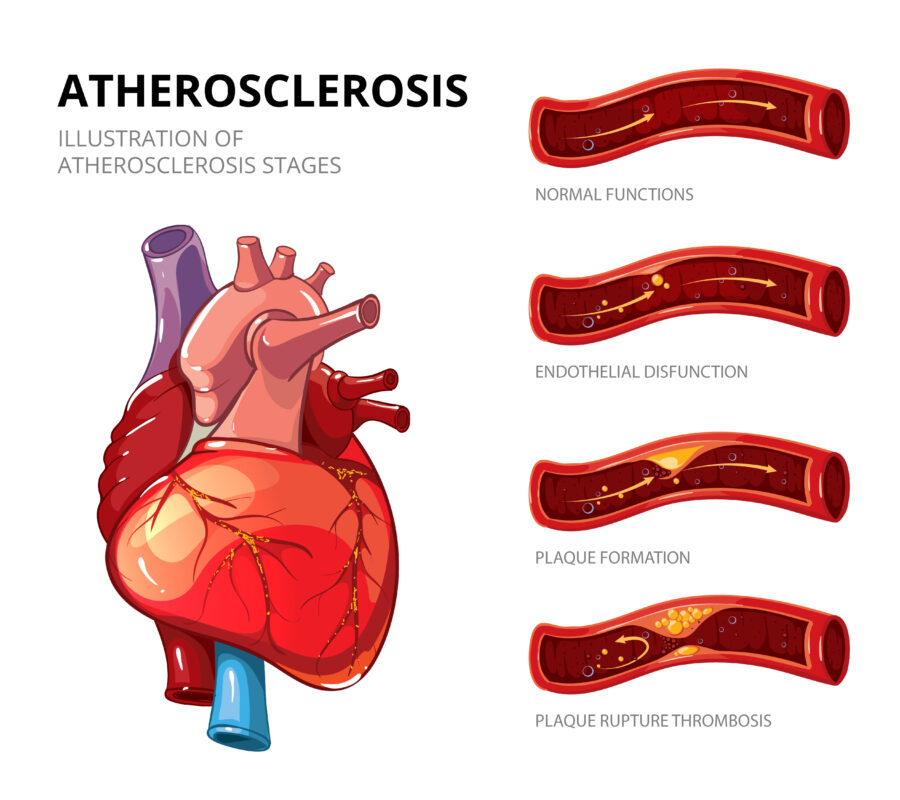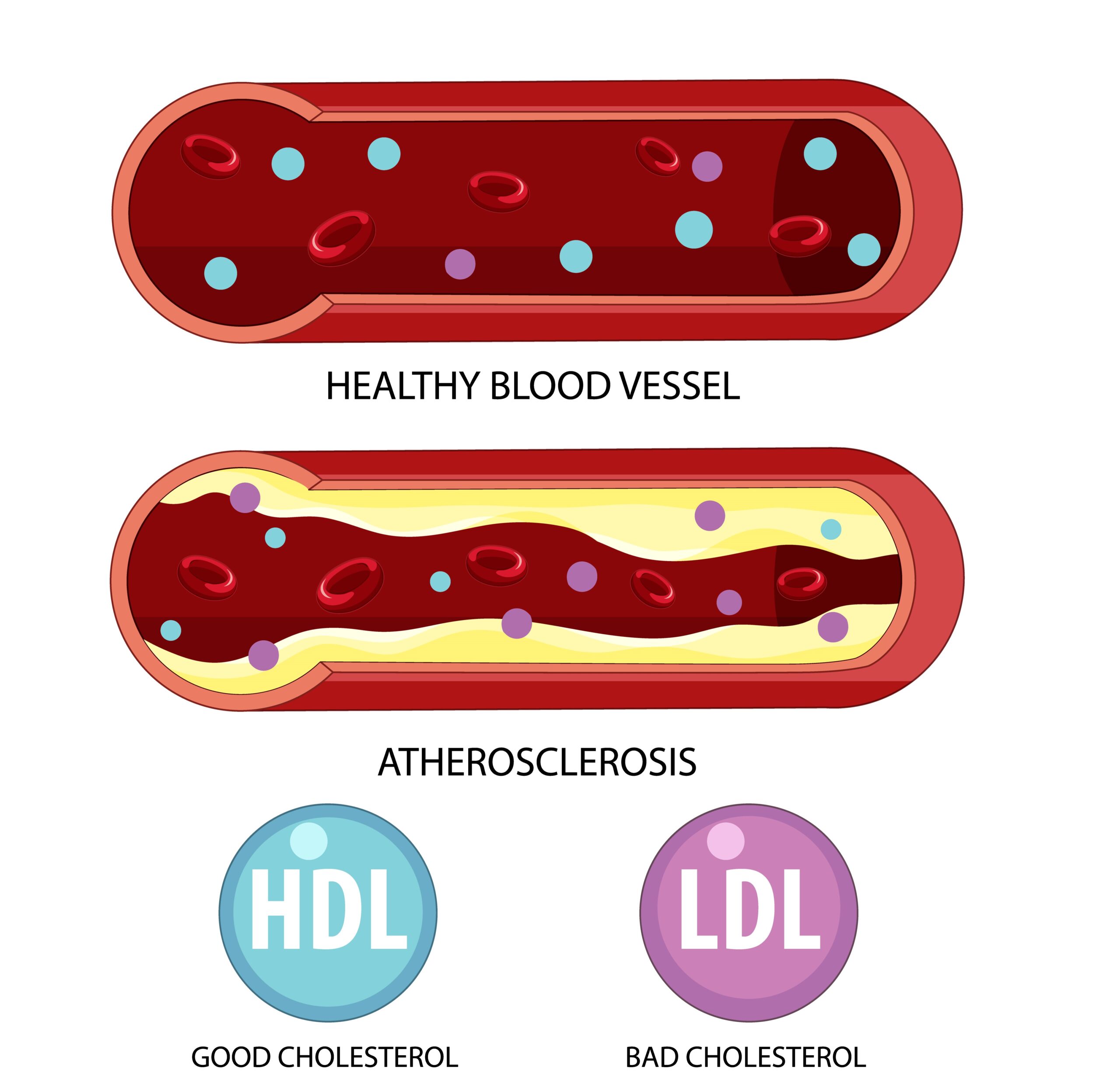Atherosclerosis is a condition characterized by the buildup of fatty plaques inside the arteries, causing them to narrow and harden. This disease is a major contributor to heart attacks, strokes, and other cardiovascular problems.
One way to assess the health of arteries and detect early signs of atherosclerosis is by measuring pulse wave velocity (PWV). PWV measures the speed at which the pressure wave generated by the heartbeat travels along the arterial walls. It reflects arterial stiffness — healthy, elastic arteries allow the wave to travel slowly, while stiffened arteries cause the wave to move faster. Since arterial stiffness is closely linked to cardiovascular health, PWV is a valuable tool for assessing heart and blood vessel risk and monitoring diseases like atherosclerosis and hypertension.
Arteriosclerosis vs. Atherosclerosis: Easy-to-Understand Difference
Arteriosclerosis is a general term that means the arteries, which carry blood from the heart to the rest of the body, become hard and less flexible. This can happen as people get older or from health problems like high blood pressure. Atherosclerosis is one type of arteriosclerosis. In atherosclerosis, fatty substances like cholesterol build up inside the artery walls and form a thick layer called plaque. So, all atherosclerosis is arteriosclerosis, but not all arteriosclerosis is atherosclerosis.
| Term | Scope | Main Cause | Example |
|---|---|---|---|
| Arteriosclerosis | Broad term for artery stiffening | Aging, calcification, plaque, hypertension | All types of artery hardening |
| Atherosclerosis | Specific type of arteriosclerosis | Fatty cholesterol-rich plaque | Coronary artery disease |
What is Atherosclerosis?
Atherosclerosis is a progressive disease characterized by the accumulation of fatty deposits called plaques within the arterial walls. This buildup happens especially in areas where blood flow is uneven. Over time, the arteries get stiff and clogged, which can lead to serious problems like heart attacks and strokes. It is a common cause of illness and death, and factors like diet and family history can increase the risk [1].
Pathophysiology of Atherosclerosis
Atherosclerosis starts when the lining of the blood vessels, called the endothelium, gets damaged. This damage can be caused by high blood pressure, smoking, diabetes, or high levels of bad cholesterol (LDL). When the lining is damaged, LDL cholesterol can enter the blood vessel walls. Inside the walls, LDL cholesterol gets changed by a process called oxidation. This change causes the body to send immune cells like macrophages and T-cells to the area. These cells try to remove the oxidized LDL by swallowing it, turning into foam cells. When foam cells build up, they form fatty streaks. Over time, these streaks can grow into larger plaques that narrow the arteries and cause blockages [2].
Clinical Manifestations of Atherosclerosis
Atherosclerosis is often silent in the early stages. Symptoms are not noticed until arteries are narrowed significantly or plaques rupture. When a plaque breaks, a blood clot is formed. This clot can block blood flow and cause serious problems [3].
Symptoms vary based on the affected arteries:
- Coronary arteries: Narrowing causes angina, characterized by chest pain during exertion or stress.
- Carotid arteries: Reduced blood flow to the brain may lead to transient ischemic attacks (mini-strokes) or full strokes, presenting as weakness, numbness, or speech difficulties.
- Peripheral arteries: In the limbs, it causes peripheral artery disease, manifesting as pain or cramping during walking. Severe cases may lead to non-healing wounds and tissue death.
Because symptoms often appear late, early detection and management of risk factors are crucial to prevent complications.

Pulse wave velocity and detection of Atherosclerosis
Early identification of subclinical atherosclerosis is vital for reducing cardiovascular risk. However, traditional diagnostic approaches—such as risk factor assessment and scoring systems—often fall short in detecting early disease. Imaging techniques, while effective, are costly, time-consuming, and sometimes expose patients to radiation or contrast agents.
Arterial stiffness plays a pivotal role in atherosclerosis development. Increased stiffness leads to higher luminal pressure and shear stress, causing endothelial dysfunction and accelerating plaque formation. This also stimulates excess collagen production, further stiffening the arteries and creating a vicious cycle.
PWV, as the gold standard measure of arterial stiffness, offers a simple, non-invasive, and reproducible assessment method. Numerous clinical studies and meta-analyses have demonstrated strong correlations between elevated PWV and the presence of coronary, cerebral, and carotid atherosclerosis. Importantly, longitudinal studies reveal that PWV independently predicts future cardiovascular events beyond traditional risk factors.
Thus, PWV measurement is a promising screening tool to identify individuals at high risk of subclinical atherosclerosis and cardiovascular disease, especially in large population screenings [4].
Arteriograph and Atherosclerosis
Beyond PWV, the Arteriograph has emerged as an innovative, non-invasive device for assessing arterial stiffness and function by analyzing arterial waveforms. It provides valuable insights into early vascular changes before symptoms appear. Arteriograph is user-friendly and reproducible, making it suitable for routine clinical use.
In fact, early detection allows doctors to act quickly and prevent serious cardiovascular disease. Because of this, the Arteriograph works well alongside other tests. Improvement in the management of early-stage atherosclerosis is expected from its use.



